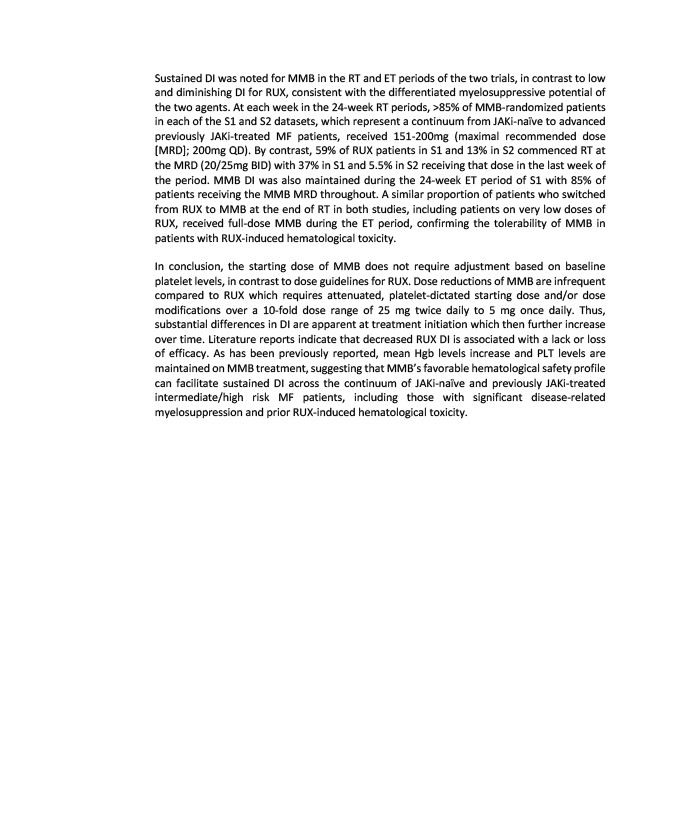
Sustained DI was noted for MMB in the RT and ET periods of the two trials, in contrast to low
and diminishing DI for RUX, consistent with the differentiated myelosuppressive potential of
the two agents. At each week in the 24-week RT periods, >85% of MMB-randomized patients
in each of the S1 and S2 datasets, which represent a continuum from JAKi-naïve to advanced
previously JAKi-treated MF patients, received 151-200mg (maximal recommended dose
MRD; 200mg QD). By contrast, 59% of RUX patients in S1 and 13% in S2 commenced RT at
the MRD (20/25mg BID) with 37% in S1 and 5.5% in S2 receiving that dose in the last week of
the period. MMB DI was also maintained during the 24-week ET period of S1 with 85% of
patients receiving the MMB MRD throughout. A similar proportion of patients who switched
from RUX to MMB at the end of RT in both studies, including patients on very low doses of
RUX, received full-dose MMB during the ET period, confirming the tolerability of MMB in
patients with RUX-induced hematological toxicity.
In conclusion, the starting dose of MMB does not require adjustment based on baseline
platelet levels, in contrast to dose guidelines for RUX. Dose reductions of MMB are infrequent
compared to RUX which requires attenuated, platelet-dictated starting dose and/or dose
modifications over a 10-fold dose range of 25 mg twice daily to 5 mg once daily. Thus,
substantial differences in DI are apparent at treatment initiation which then further increase
over time. Literature reports indicate that decreased RUX DI is associated with a lack or loss
of efficacy. As has been previously reported, mean Hgb levels increase and PLT levels are
maintained on MMB treatment, suggesting that MMB’s favorable hematological safety profile
can facilitate sustained DI across the continuum of JAKi-naïve and previously JAKi-treated
intermediate/high risk MF patients, including those with significant disease-related
myelosuppression and prior RUX-induced hematological toxicity.